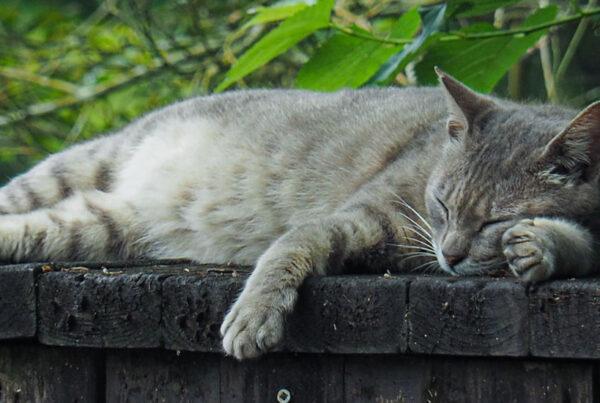A Visit to the Grass Mountain Raptor Center in Taipei
TEXT / OWAIN MCKIMM
PHOTOS / POWEI CHEN
Few sights are more majestic than that of a bird of prey circling in the sky, riding the air currents, its wings outstretched and still. Perhaps unsurprisingly due to its dense variety of ecosystems and stark altitudinal variation, Taiwan is home to a large number of raptor species, many of which can be seen in and around the capital Taipei itself. On a crisp morning in November, Travel in Taiwan spoke to Tsai Die-hua, secretary general of the Raptor Research Group of Taiwan, about the wheres, whens, and hows of spotting these amazing birds in the city as well as the group’s most recent conservation initiatives.
The northwestern wall of the Grass Mountain Raptor Center – situated on the slopes of the Yangmingshan massif, just outside Yangmingshan National Park, not far north of central Taipei – is decorated with a pretty but telling mural. On the left side of the depicted scene, over high, forested peaks, two rare eagles, a mountain hawk-eagle and a black eagle, stoically circle. In the middle, a black-winged kite attempts a complex aerial maneuver and a crested serpent eagle rises wide-winged over a checkerboard of farmers’ fields. On the right, a crested goshawk flies, aggressively beating its wings, towards a steadily, inevitably encroaching cityscape.
The center, operated by the Raptor Research Group of Taiwan, was established in 2022 with the purpose of creating a space that could serve both as an educational center and a rescue station for raptors, many of which become unfortunate casualties of northern Taiwan’s increasingly urbanized environment.
According to Tsai Die-hua, 48 raptor species call Taiwan home for at least some of the year (with 12 of those species being nocturnal). About half are migratory, either passing over Taiwan – stopping for only a short period en route to their winter or summer destinations – or are resident for the winter only, before spending the summer elsewhere.

Indeed, Taiwan’s position to the northeast of the South China Sea puts it on the perfect route for migrating raptors. During the spring and fall, tens of thousands of these birds – mostly Chinese goshawks and gray-faced buzzards – can be seen making their way between their wintering grounds in the tropics and their summer homes in Northeast Asia. Birdwatchers galore flock to Kenting National Park on Hengchun Peninsula in the Taiwan mainland’s far south in October to see the migration south, while in the spring these birds, taking a slightly different route, can be seen primarily in the Baguashan scenic area in Changhua County and on Mt. Guanyin on the western banks of the Tamsui River estuary northwest of Taipei City.





However, as Tsai points out, Mt. Guanyin is by no means the only place in the greater Taipei area that one can spot such birds. During winter, the best location to spot a bird of prey, he states, is the Guandu Nature Park, a half-moon-shaped area of undeveloped land in Taipei City’s northern Beitou District. “Many winter residents are active on the Guandu Plain during this season,” Tsai says. “You also have a high chance of seeing crested serpent eagles, crested goshawks, black-winged kites, even black eagles. The Huajiang Wild Duck Nature Park in Wanhua District is similarly busy during the winter, with populations of peregrine falcons and ospreys. You might even see an eastern marsh-harrier if you’re lucky!” Those out on bike rides by the riverside here might also spot black kites hunting along the Xindian River, while those picnicking in the city’s central Daan Park should look out for its resident crested goshawks, particularly during the summer breeding season (an event which the group livestreams on YouTube at www.youtube.com/user/rrgtaiwan, with cameras set up in and around the nests).


To many it may seem surprising that these birds, so readily identified with wild, remote spaces, could be so abundant and indeed thrive in urban environments. Tsai explains that cities in fact provide an abundance of food for these types of avians. Creatures that we would define as pests, such as rats and cockroaches – the Taipei urbanite’s perpetual foe – are dietary staples for many raptors. Combine these easy pickings with a relative lack of predators and you have a rather attractive hunting and even breeding environment for certain species. (For others though – such as the mountain hawk-eagle, which requires pristine forest to breed – urbanization has a far more destructive influence). That said, even for species that can thrive in densely populated areas, cities bring their own unique dangers, tall buildings, traffic, and a cavalier attitude to setting out rat poison being just a few of the more serious problems.




As a conservation effort, since 2017 the Raptor Research Group of Taiwan has been operating a raptor rescue service in order to rehabilitate any injured birds of prey that may have fallen foul of these human-related hazards. “We currently rescue over 200 raptors each year,” Tsai says, “from all over northern Taiwan. Around 20 percent of the cases we get are raptors that have flown into windows. Many others come to us after being hit by cars, but on examination we often find that they have a buildup of poisons – sometimes several different varieties – in their systems as well. This makes them disoriented or slows their reaction times, so they are more susceptible to being hit by vehicles.”
It’s vital, then, Tsai stresses, for people to be aware of how to make their cities a safe space for raptors. As well as providing the group with a dedicated space for raptor rescue, an important component of the new Grass Mountain Raptor Center’s mission is to provide education for the general public. In addition to the rescue station, the center houses an exhibition hall and lecture room, where those interested can learn how to co-exist with these birds in urban environments. “People are becoming more active about creating green spaces – which attract raptors – by planting trees and flowers on their rooftops, for example,” Tsai says. “While this is a positive thing, if they don’t also take measures to protect these birds from striking their windows – such as adding some simple decorations to the windows so that the birds can identify them – then they can cause more harm than good.”
Those wanting to learn more about Taiwan’s raptors and the issues facing them can visit the center between 11am and 5pm, Tuesday to Saturday. Group tours are available by arrangement for parties of between 10 and 30 people. And while the center’s information boards are not bilingual, English-language tours can be provided on request.
For those wanting to join in some real-life raptor spotting, on the other hand, the center hosts a free birdwatching event – Open Wings – on the third Saturday of every month. Details of the time and location are posted on the group’s Facebook page on the first of each month, and communal binoculars are available for those who do not have their own.
Raptor Research Group of Taiwan
(台灣猛禽研究會)
Add: No. 7, Jianye Rd., Shilin District, Taipei City
(台北市士林區建業路7號)
Tel: (02) 2862-5560
Website: raptor.org.tw (Chinese)
FB: www.facebook.com/RRGTaiwan
About the author
















